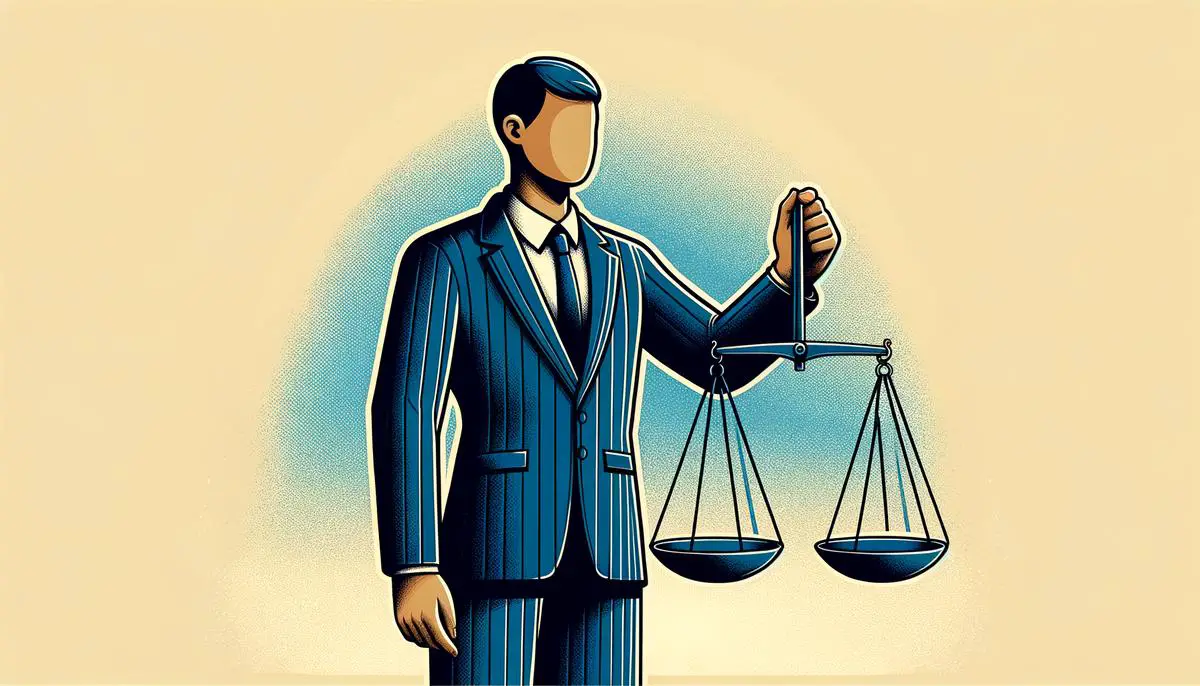Understanding the role of a trustee encompasses grasping the vast responsibilities and expectations tied to managing and protecting the interests of beneficiaries. As we examine the key aspects of trusteeship, it’s crucial to appreciate the balance between legal duties and ethical stewardship. This discussion aims to provide a clear overview of what it means to be a trustee, focusing on the vital roles they play in asset management, beneficiary relations, and legal compliance. Such an understanding is pivotal for anyone involved in or impacted by the dynamics of trusts.
Understanding Trustee Roles
Understanding the Role of a Trustee: Navigating Responsibilities and Expectations
In the world of estate planning and management, the role of a trustee emerges as a keystone, intertwining legal obligations with ethical stewardship. A trustee’s journey is paved with responsibilities that demand both precision and compassion, aiming to protect and propagate the interests of beneficiaries under the guiding light of the trust’s purpose.
Foundations of Trusteeship
At the heart of trusteeship lies the duty of loyalty, a principle commanding trustees to prioritize the interests of the beneficiaries above all. This cornerstone ensures that the trustee’s actions are in strict alignment with the trust’s goals, safeguarding the assets against conflicts of interest and personal gain.
The Mantle of Fiduciary Obligations
Fiduciary duty encapsulates the essence of trusteeship, tasking trustees with executing decisions that reflect prudence, fairness, and meticulous care. It is a commitment to act in the best interest of the trust, navigating investments, distributions, and asset management with judicious foresight.
Administration: A Delicate Balance
Effective administration is crucial, encompassing accurate record-keeping, timely filing of tax returns, and consistent communication with beneficiaries. A trustee must wield diligence and transparency, ensuring beneficiaries are well-informed of the trust’s performance and transactions, thereby fostering a foundation of trust and clarity.
Investment and Asset Management
Preserving and enhancing the trust’s assets is a fiduciary imperative. Trustees must exercise sound judgment in investment strategies, balancing risk against potential growth. This requires a deep understanding of financial markets and the unique goals of the trust, embodying a strategy that is both prudent and forward-looking.
Adhering to Legal and Trust Terms
Navigating the legal terrain is pivotal. Trustees must comply with both the letter and the spirit of the law, alongside the specific provisions set forth in the trust agreement. This includes adhering to state and federal laws, ensuring the trust’s operations are within legal bounds, and faithfully executing the trust according to its terms.
Conflict Resolution and Beneficiary Relations
Trustees often find themselves at the crossroads of beneficiary relations, where interpersonal skills become invaluable. Clear, empathetic communication and a transparent approach to conflict resolution can mitigate disputes, fostering an atmosphere of mutual respect and understanding.
In essence, the responsibilities of a trustee are multi-faceted, merging legal obligations with a profound sense of ethical stewardship. Trustees are the guardians of trust assets, navigating the delicate balance between prudent management and the overarching objectives of the trust. Embracing this role demands not only a comprehensive understanding of legal and financial principles but also a deep commitment to acting in the best interest of the beneficiaries. Through meticulous administration, strategic asset management, and clear communication, trustees can fulfill their duties, honoring the trust’s purpose and safeguarding its legacy for future generations.

Legal Obligations and Liabilities
Navigating the Complex Landscape of Trustee Liability
Diving deeper into the world of trusteeships reveals a landscape riddled with potential legal pitfalls and liabilities. A trustee, armed with the power to manage and distribute assets, wields significant influence. However, with great power comes great responsibility—and, indeed, the risk of legal repercussions should they stray from the narrow path of their obligations.
The Challenging Terrain of Personal Liability
At the heart of a trustee’s potential legal challenges is the specter of personal liability. This is not a matter to be taken lightly, for the law does not simply request but demands a high standard of conduct from those who manage others’ assets. A breach of trust, whether due to negligence, failure to adhere to the trust’s terms, or a conflict of interest, can lead to personal liability for the trustee.
Consider, for example, a scenario where a trustee, perhaps swayed by personal gain, makes an investment that significantly benefits themselves at the expense of the trust’s beneficiaries. Such an action, starkly at odds with the duty of loyalty, could not only erode the trust’s value but also expose the trustee to lawsuits filed by the aggrieved beneficiaries. The financial ramifications can be severe, with the trustee potentially required to compensate for losses out of their own pocket.
The legal obligations of a trustee extend beyond just managing assets prudently. They are also tasked with ensuring the trust complies with all relevant taxes and regulations. Missteps in this arena, whether intentional or accidental, can attract the attention of governmental bodies, leading to fines or other penalties, further complicating the trustee’s role.
The Safety Net of “Exculpation” and Insurance
Despite the daunting landscape of liabilities, trustees are not without protections. Trust documents often include “exculpation” clauses designed to shield trustees from liability for certain actions, provided they were executed in good faith. It’s a nuanced safety net, offering some degree of protection but not carte blanche to act without care.
Further fortifying this protective barrier is the option of trustee insurance, which can provide financial coverage in the event of a lawsuit. Such insurance, though not a license for recklessness, does offer a buffer against the financial risks of personal liability.
The Finish Line: Prudent, Ethical Stewardship
As we navigate the intricate web of duties and potential liabilities facing a trustee, the guiding north star remains the commitment to prudent, ethical stewardship. The trustee’s journey is fraught with challenges, demanding a deep understanding of the trust’s terms, a vigilant adherence to legal requirements, and an unwavering dedication to the beneficiaries’ interests.
In this complex landscape, the trustee must balance legal obligations with ethical considerations, ensuring not only compliance with the law but also the cultivation of a trust environment rooted in transparency, fairness, and respect for the beneficiaries. This dual focus not only guards against legal liabilities but also fosters a culture of trust and integrity, the true foundation upon which successful trusteeships are built.

Managing Trust Assets and Finances
Navigating the distribution of trust assets and ensuring the financial stability of a trust involves a complex web of responsibilities and ethical considerations. Trustees must not only adhere to the legal framework that governs their actions but also implement best practices that promote the health and longevity of the trust. This discussion delves into strategies for managing trust assets and finances effectively, complementing the foundational aspects previously outlined.
Diversification of Investments
: A cornerstone of prudent asset management is the diversification of investments. This strategy mitigates risk by spreading investments across various asset classes, sectors, and geographies. For trustees, this means not putting all the trust’s assets in one basket but rather, selecting a mix of stocks, bonds, real estate, and possibly other assets, depending on the trust’s objectives and risk tolerance. Diversification helps protect the trust’s portfolio from volatility in any single investment or market sector.
Regular Financial Review and Analysis
: Effective management requires ongoing oversight. Trustees should conduct regular reviews of the trust’s financial performance and the broader economic landscape. This entails analyzing investment performance, assessing the trust’s liquidity needs, and adjusting the investment strategy as needed to respond to changing market conditions or beneficiary needs. Periodic financial reviews ensure that the trust remains aligned with its long- and short-term objectives.
Professional Advice and Collaboration
: The complexity of financial markets and legal landscapes means trustees often benefit from seeking professional advice. Collaborating with financial advisors, attorneys, and accountants can provide trustees with the expertise needed to make informed decisions. These professionals can offer guidance on investment strategies, tax planning, and compliance issues, ensuring the trust’s management adheres to best practices and current laws.
Beneficiary Engagement and Education
: While the focus of trust management often lies on financial and legal responsibilities, engaging with and educating beneficiaries about the trust’s assets, its performance, and their future benefits is equally important. Transparent communication helps build trust, reduces misunderstandings, and encourages a sense of stewardship among beneficiaries. Providing beneficiaries with regular updates, educational resources about financial management, and involving them in relevant discussions can foster a positive relationship between trustees and beneficiaries.
Sustainable and Ethical Investing
: In recent years, there’s been a growing emphasis on sustainable and ethical investing. Trustees should consider the environmental, social, and governance (ESG) implications of their investment choices. By investing in companies and funds that adhere to high ESG standards, trustees can align the trust’s assets with broader values, potentially reducing risk and identifying investment opportunities that could offer long-term benefits.
Emergency Preparedness
: Effective trust management involves preparing for unforeseen events. Trustees should establish contingency plans for various scenarios, including economic downturns, changes in beneficiary circumstances, or sudden liquidity needs. Having a well-thought-out emergency plan ensures that the trust can navigate challenges without compromising its integrity or financial security.
Implementation of Technology
: Utilizing financial management software and other technologies can greatly enhance the efficiency and accuracy of trust administration. These tools offer streamlined processes for accounting, investment tracking, and reporting, reducing the likelihood of errors and enabling trustees to access critical information readily. Embracing technology can also facilitate better communication with beneficiaries through secure online portals.
In managing trust assets and finances, trustees must navigate a delicate balance between legal obligations, financial prudence, and ethical stewardship. By employing these best practices, trustees can uphold their fiduciary duties, ensuring the trust’s assets are managed effectively for the benefit of current and future beneficiaries. Through diligent oversight, strategic planning, and open communication, trustees play a pivotal role in the stewardship of trust assets, contributing to the long-term success and sustainability of the trust.

Communication and Reporting to Beneficiaries
Understanding the Human Element: Strengthening Trust Connections
The heart of fulfilling trustee duties lies not just in meeting legal expectations or managing assets efficiently. It involves recognizing and nurturing the human element—the relationship between trustees and beneficiaries. When rooted in effective communication, this relationship transforms from a mere contractual obligation into a dynamic partnership that enriches the trust’s legacy.
Why Effective Communication Matters
At its core, effective communication fosters transparency, trust, and mutual respect. It’s the bridge that connects the intricate world of fiduciary responsibilities with the beneficiaries’ personal aspirations and needs. Imagine a scenario where beneficiaries are kept in the dark, unsure how their interests are managed or protected. Such a scenario breeds uncertainty, frustration, and, ultimately, conflict.
Conversely, when trustees actively engage in open dialogue, they demystify the complexities of trust administration. Beneficiaries feel valued and acknowledged when their queries are met with patience and their concerns are addressed with clarity. This acknowledgment doesn’t just satisfy a need for information; it builds a foundation of trust that can withstand the tests of time and change.
Achieving Effective Communication: A Blueprint for Trust Success
- Regular Updates and Meetings: Establishing a schedule for regular updates and meetings keeps beneficiaries informed and involved. These sessions need not delve into the minutiae of every decision but should highlight key actions, strategies, and outcomes. They serve as a platform for discussing future plans, addressing concerns, and brainstorming solutions together.
- Clear, Understandable Language: The world of trust management is often tangled in legal jargon and complex financial concepts. Breaking down this information into clear, layman’s terms is crucial. By ensuring that all communications are accessible, trustees remove barriers to understanding, enabling beneficiaries to make informed decisions and provide meaningful input.
- Active Listening and Empathy: Effective communication is a two-way street. Trustees must cultivate the art of active listening – paying attention to the underlying messages and emotions in beneficiary communications. Demonstrating empathy and understanding towards their concerns not only validates their feelings but also strengthens the relational bond.
- Digital Platforms and Tools: In today’s tech-driven world, leveraging digital platforms and tools can enhance communication efficiency and accessibility. Secure online portals, emails, and video conferencing can complement traditional methods, ensuring that beneficiaries, regardless of their location, stay connected and informed.
Education and Engagement:Educating beneficiaries about the intricacies of trust management empowers them to engage more deeply with the trust’s operations. Workshops, informational packets, and one-on-one sessions to explain investments, legal obligations, and administrative processes demystify the trustee’s role and foster a collaborative atmosphere.
Transparency and Honesty: Perhaps the most fundamental principle in effective communication is maintaining transparency and honesty, even when facing challenging situations. This approach not only upholds the trustee’s integrity but also reassures beneficiaries that their best interests are the top priority.
In Conclusion
Cultivating effective communication between trustees and beneficiaries isn’t merely a best practice—it’s an essential ingredient for the trust’s health and longevity. By investing time and effort into building this bridge of understanding, trustees not only meet their fiduciary responsibilities but also honor the trust’s essence and its underlying human connections. Through dialogue, education, and empathy, a symbiotic relationship can flourish, ensuring that the trust operates not just as a legal entity but as a living legacy that reflects the shared values and aspirations of all involved.

As we conclude this exploration of trusteeship, it’s evident that the role of a trustee is multifaceted, blending a commitment to legal responsibilities with a deep-seated ethical duty towards beneficiaries. By effectively managing trust assets, ensuring clear and empathetic communication with beneficiaries, and adhering to the legal framework, trustees uphold the integrity of the trust. It’s through dedicated oversight and a commitment to the trust’s success that trustees truly honor their position, safeguarding the trust’s legacy and ensuring its purpose is met for future generations.








